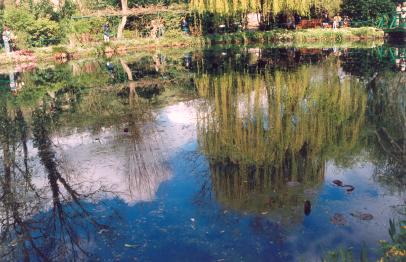
The Water Garden
In 1893, ten years after his arrival at Giverny, Monet bought the piece of land neighboring his property on the other side of the railway. It was crossed by a small brook, the Ru. Monet had the first small pond dug. Later on, the pond would be enlarged to its present day size. The water garden is full of asymmetries and curves. It is inspired by the Japanese gardens that Monet knew from the prints he collected.
In this water garden you will find the famous Japanese bridge covered with wisterias, other smaller bridges, weeping willows, a bamboo wood and above all the famous nympheas which bloom all summer long.
Claude Monet n'a jamais été au Japon, mais il a collectionné les estampes japonaises avec passion. Il aimait toutes les plantes exotiques qui y figurent et il en a introduit beaucoup dans son jardin de Giverny, notamment les bambous. Les Européens qui visitent les jardins de Monet à Giverny sont souvent surpris par la taille de ces bambous. Ils doivent atteindre huit mètres environ.
Monet was exceptionally fond of painting controlled nature: his own gardens in Giverny, with its bamboo, pond, and bridge.
He wrote daily instructions to his gardening staff, precise designs and layouts for plantings, and invoices for his floral purchases and his collection of botany books. As Monet's wealth grew, his garden evolved. He remained its architect, even after he hired seven gardeners.

No comments:
Post a Comment